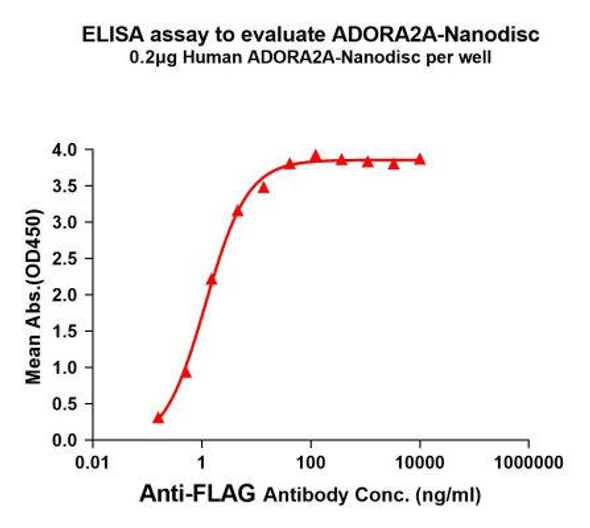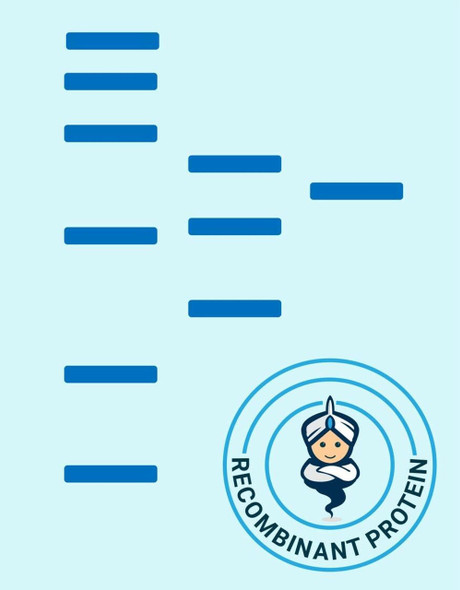Nanodisc Human ADORA2A-Strep Protein (HDFP767)
- SKU:
- HDFP767
- Size:
- 10μg
- Target:
- ADORA2A
- Tag:
- C-Flag&Strep Tag
- Expression Host:
- HEK293
- Conjugate:
- Unconjugated
Description
| Product Name: | Nanodisc Human ADORA2A-Strep Protein |
| SKU: | HDFP767 |
| Size: | 10μg |
| Target: | ADORA2A |
| Tag: | C-Flag&Strep Tag |
| Expression Host: | HEK293 |
| Conjugate: | Unconjugated |
| Synonyms: | A2aR; ADORA2; RDC8 |
| Protein Families: | GPCR. |
| Protein Description: | Human ADORA2A-Strep full length protein-synthetic nanodisc |
| Protein Pathways: | Calcium signaling pathway, Neuroactive ligand-receptor interaction, Vascular smooth muscle contraction. |
| Molecular Weight: | The human full length ADORA2A-Strep protein has a MW of 44.7 kDa |
A member of the guanine nucleotide-binding protein (G protein)-coupled receptor (GPCR) superfamily, which is subdivided into classes and subtypes. The receptors are seven-pass transmembrane proteins that respond to extracellular cues and activate intracellular signal transduction pathways. This protein, an adenosine receptor of A2A subtype, uses adenosine as the preferred endogenous agonist and preferentially interacts with the G(s) and G(olf) family of G proteins to increase intracellular cAMP levels. It plays an important role in many biological functions, such as cardiac rhythm and circulation, cerebral and renal blood flow, immune function, pain regulation, and sleep. It has been implicated in pathophysiological conditions such as inflammatory diseases and neurodegenerative disorders. Alternative splicing results in multiple transcript variants. A read-through transcript composed of the upstream SPECC1L (sperm antigen with calponin homology and coiled-coil domains 1-like) and ADORA2A (adenosine A2a receptor) gene sequence has been identified, but it is thought to be non-coding.
| Uniprot ID: | P29274 |
| Formulation & Reconstitution: | Lyophilized from nanodisc solubilization buffer (20 mM Tris-HCl, 150 mM NaCl, pH 8.0). Normally 5% – 8% trehalose is added as protectants before lyophilization. Please see Certificate of Analysis for specific instructions. Do not use solvents with a pH below 6.5 or those containing high concentrations of divalent metal ions (greater than 5 mM) in subsequent experiments. |
| Storage & Shipping: | Store at -20°C to -80°C for 12 months in lyophilized form. After reconstitution, if not intended for use within a month, aliquot and store at -80°C (Avoid repeated freezing and thawing). Lyophilized proteins are shipped at ambient temperature. |
| Usage: | Research use only |







